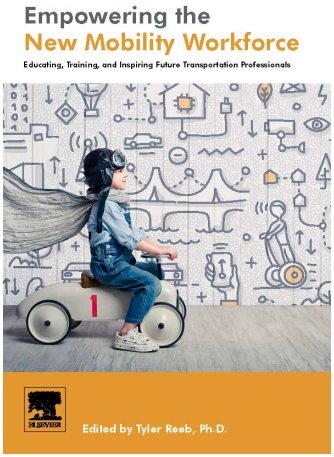Our ability to minimize the environmental impacts of the transportation system depends on the development of a transportation workforce with up-to-date knowledge and advanced skills. The National Center for Sustainable Transportation contributes to workforce development efforts and interdisciplinary programs designed to meet the world’s growing needs for qualified, thoughtful, and dedicated transportation professionals.

"I See Myself in that Career": Exploring Methods to Attract the Next Generation Transportation Workforce
Predicting a workforce crisis for the past twenty years, the transportation field has launched a wide variety of initiatives to increase the talent pipeline that would choose transportation as a field of choice for study and future careers. This project follows on the premise that increasing awareness of career opportunities is essential to attracting new entrants at an early age, and that awareness building should be dynamic.

Environmental Career Path Profiles
Many environmental fields contribute to planning, building, and operating a sustainable transportation network. The people who bring these skills and their passion to work in transportation organizations help to mitigate the environmental impacts of our expansive mobility, and identify, design and operate new mobility systems for the future. Here you will find links to 14 profiles of people working across 11 different environmental fields in transportation-related work.
The design and collection of these profiles was conducted by Marissa McFadden, a University of Vermont Graduate student.

Empowering the New Mobility Workforce: Educating, Training, and Inspiring Future Transportation Professionals
Empowering the New Mobility Workforce: Educating, Training, and Inspiring Future Transportation Professionals enlists a multidisciplinary roster of subject matter specialists who identify the priorities and strategies for cultivating a skilled workforce for the rapidly changing transportation landscape. Transportation employers will need to hire 4.6 million workers—1.2 times the current transportation workforce—in the next decade. The book explores how leaders in education, industry and government can work together to create an ecosystem that facilitates learning and upskilling for emerging and incumbent transportation workers. Readers will learn how to conduct labor market analyses and develop competency models to adapt their workforce.

Online Training for the Transit Industry
CSULB offered an expanded and updated version of its online course that addresses Electrical System Diagnostics for the transit industry. Designed in partnership with the Southern California Regional Transit Training Consortium (SCRTTC), the course enhances a technician's basic electrical skills and circuit diagnosis while teaching them how to work with a Digital Volt-Ohm Meter (DVOM) in actual circuit conditions as well as in virtual simulated conditions. This is a critical component of managing sustainable public transit systems.

Caltrans Sustainable Freight Academy
CSULB facilitated three four-day in-person Sustainable Freight Academies for Caltrans: two in 2021 and one in 2024. These trainings build upon a model used by Caltrans for its other Field Academies, including the Freight Academy, but with a curriculum focused on Caltrans’s role in implementing the California Sustainable Freight Action Plan (CSFAP) and California Freight Mobility Plan (CFMP). This includes building capacity within the department by allowing Caltrans planners to gain knowledge of current trends and issues surrounding the movement of freight throughout the state, with an emphasis on the role played by freight planning within system planning, including traffic management planning, identification of alternative routes, pavement design innovation, modal shift opportunities, and system resiliency.
Research on Workforce Development

Transit Workforce Development White Paper - Workforce Implications of Transitioning to Zero Emission Public Transit
This white paper provides educational and policy-driven approaches to sustainable transportation workforce development in the transit sector with a focus on knowledge transfer and training strategies for zero-emission bus technologies. The authors draw from a comprehensive survey of national research, interviews with transit leaders, and case studies to identify the most critical technology transfer gaps in the adoption of zero-emission bus technologies. The paper concludes with strategic transit workforce priorities and related recommendations for transit leaders, educational partners, and policy makers.
